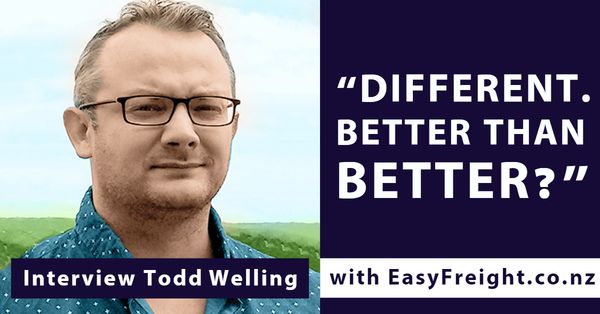
Proven Online Marketing Tactic for 2019 & Top Mistakes Businesses Make
25-minute read (43-minute watch)
You Will Learn:
- What marketing tactics you must use in 2019 and what to ignore.
- How to avoid common mistakes.
- And other practical tips you can implement today!
Max: Today we will talk about proven online marketing tactics for 2019, and top mistakes businesses make.
Our guest today is Todd Welling from Overdose Digital who is the Founder and Group CEO of Overdose, a fresh breed of Digital Commerce Agency that works in deeply entwined partnerships with their Retail Clients.
Overdose has been going through some exceptional growth and now taking their business to a global level. The company has been recognised as Westpac Auckland’s Best Emerging Business of 2018. Todd, would you like to add anything about yourself?
Todd: I am happy to give you a little bit of a history of Overdose. We founded the organisation by myself and Ryan back in about late 2016. Over the course of about two and a half years, we have grown out from the two of us as the founders to a team of around eighty-five guys.
Our teams are spread across about thirty guys in downtown Auckland. A big team is over to about thirty guys in Melbourne, and a small new team is up in Singapore. Then, we have a service centre in Ukraine.
So, our key offering is that we are a mid-market Digital Commerce Partnership, essentially what that means is we work with retailers who tend to retail online between one and twenty million dollars.
We work with them in a strategic partnership format through the entire life cycle of Digital commerce. We view our business as three key pillars: strategy, execution and activation.
Strategically I do a lot of my work with CEOs and Chairman’s, trying to understand what digital transformation means to the organisation, modelling digital into their business and how we incorporate digital into an omni-channel physical presence.
Then, that leads into the user experience design, platform, selection, integration, architecture and website builds. Off the back of that, we have been going into some really deep long-term relationships around search, performance marketing, social media, automation and AI.
Essentially the majority of our clients we are waiting is in one or two to five-year relationship there. And the focus is always on that long-term growth of the organisation. So, we go into 2019, and we have got some big growth prospects.
We have just joined a global alliance called Together Group based out of London. A couple of weeks I will fly out to London and New York, and we are opening offices there.
The intention being that is within the next year you will see Overdose growing from eighty man team to an over two hundred man team with a truly global presence.
We intend to stay in that same market niche, really servicing those high-growth mid-market retailers. We do not particularly have much ambition to go into the super big organisations.
We really enjoy working with those midsize organisations that still have the hustle, where people are passionate, there is not too much organisational structure and that is holding an organisation back.
We have fast growth, lots of attitude and speed. We are very hungry and genuinely passionate about the small to medium enterprise market in the Australian and New Zealand markets with the fantastic opportunity to take that vision globally as well.
Max: I know that it is very challenging to achieve Westpac Business Award. What kind of steps did you take to get this achievement?
Todd: We are not quite sure, to be honest, Maxim. We turned up, and they gave us the trophy, and obviously, we filled in a lot of the paperwork to go through there.
I think what they particularly recognised is that when we architected our business, we architected something that was very deliberately different.
For those that work with a client, vendor, agency, partnership, relationship you will be used to a very prosaic structure of how those relationships tend to be. It is very much time and materials, cost resources, speed. You live in that triangle.
We very deliberately architected Overdose with an intent to be not just better but genuinely different. We wanted a vision of a business model that separated us away from the crowd.
Where everyone was running in one direction, we said that it was not about the speed of delivery or the cost or the quality of delivery. It comes down to the resonance of the depth of relationship that you have with your partners.
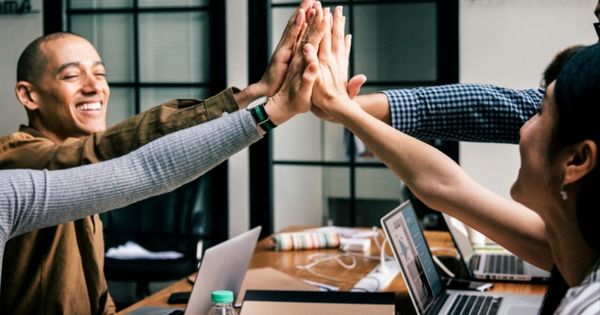
Taking an approach which was not based on what you have asked for how can I deliver it cheaper, but instead of sitting down together with our clients.
I am orienting what does the future look like and how can we collectively make a change. So, it was those decisions which really triggered our growth.
As a young organisation of only a couple of years ago, we were managing to land clients likes of barkers and merchants and the comfort group which were way beyond our standings.
But what they bought into was our attitude. I think that is the attitude and the hustle and the group of entrepreneurs that we have built around us which has allowed us to trigger that growth.
They have never told us, but what the people at Westpac particularly liked in our model was that it is a majority of the world it does not sound that innovative. However, in our world, it was a pretty innovative bold step.
We have seen amazing both internal and international growth. The fact is that we basically exported our business within eighteen months and decided to go into Australia and Singapore very early.
In our first year, we turned over about a half a million dollars. In our third year, we turned over eight to ten million dollars. So, that speed of growth is obviously something that is a quotient of what they look for and what emerges as well.
Max: Todd, you mentioned that you grew from two people to nearly eighty people. As a business owner myself, I know that it is important not only to get new clients but retain the current clients and existing customers.
What specific tactics and all things do you have in your company to retain the clients? Do you have any incentives or any contracts?
Todd: We actually took the reverse approach, Maxim. And we went with complete brazen trust. Every contract that we have with our clients is on a twenty-eight-day notice. Nobody is locked in. Nobody is tied down.
Instead, the approach we took was if we want to be accountable and if we expect our clients to pay a premium for our services, we should be delivering every day consistently.
At the end of the day as a business owner, what Overdose really sells is time, people and ideas. Our issue with scaling always came down to the quality and calibre resource that we could attract into the business.
So, I identified key individuals that I needed around me is that was my CTO, Ryan who is my co-founder and my creative director and Paul who came in as my chief operating officer.
As we acquired out into the Australian market, I was very quick to dilute my shareholding of the organisation to lock those individuals in. I only own about 45% of the company, and I have another eleven shareholders in the organisation.
And they range from 11% up to 20% regarding what those individuals own. But it is a true group mentality.
When I am a huge believer, that collaboration is the future of business success, and if you are expecting to get people to work as hard as you, you have got to cut these people in.
We have taken that to the next level with where we are going through this global growth now. We have recently diluted the organisation another 20% and given that to all of our staff.
So, every member of staff is a shareholder in the Overdose Group globally, and they have the opportunity not just to have a two-year career and jump agency to agency.
We would love to see these people hanging around for four or six years and really feeling like they are part of that. At the end of the day retention comes down to people, and the impact of the people comes down to our management style which is incredibly flat and inclusive.
We talk about a few keywords, and the most important one internally is accountability. And that is both individual and accountable as a group.
What we tend to see with a group of highly engaged staff is that if someone comes into that group and do not perform at that same level, that group naturally kind of squeezes that person out.
This can happen because they have seen what they can achieve as a group and then basically everyone who comes in has to amplify that process more. It is a really tight-knit team.
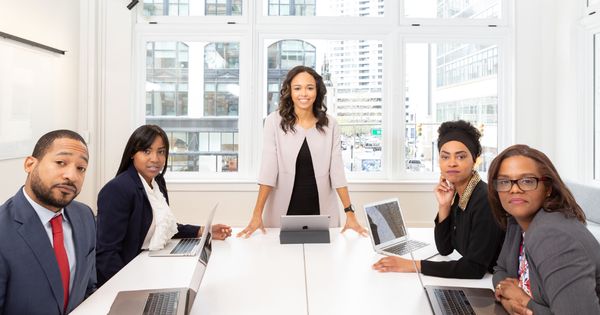
We have had hardly any churn in our staff resourcing . So, we have incredibly liberal HR policies. Nobody is locked down to location and if you have got problems with the kids at home, work from home. Do you need to take a day off? No problem. Catch up on Sunday.
Everyone is judged based on their delivery and outcomes to the group.
Off the back of that what we see is that when you give back to your staff and show them that you genuinely care about them and their lives and you want them refreshed and on full speed targeting, that they give you 110%.
And when one guy sees the other guy is giving 110%, it becomes like this beautiful toxic environment where everyone is playing off each other. So, it all comes down to the people, and we would not have retained our clients if we did not have those right resources on board.
I think another interesting part of that as well is that a lot of our resourcing has been quite organic. A lot of our development on marketing and account management teams whenever we have new roles available, we tend to feel probably 60% or 70% of those of internal referrals.
Then again keeps that accountability high because someone is back to you in. I suppose we made one higher through recruitment and it did not work. So, we have never used a recruiter at all.
Now we are really lucky that we are probably on a weekly basis of people hitting me up and saying: “I have heard what you are doing. I want in. How do I make that happen?”.
In fact, we have just hired a head of business development who called us and said: “I work here. I want to work for you. This is where I want to be”. We got people pitching to eyes now. That is lucky and humbling.
Max: I totally agree with you. If you look after your team, they will take care of your clients as well.
Todd, you have got a unique position where you work with dozens of small and big brands, and you see what works and what does not. What do you think are going to be the tracks in 2019 in terms of the marketing?
Todd: We get into some interesting situations. If you look at New Zealand, we probably look after an idea of three of New Zealand’s largest suiting menswear companies who are all direct competitors.
Now we get into some very awkward positions where those people want us to be exclusive. But we cannot be exclusive in what we do and what we have the opportunity to do it.
We see such a broad diversity of businesses that the learnings that we get off of that are applicable out to a much broader market. Many trends have been happening over the last two years.
If you look at a system’s architecture trend, there has been a definite move from what we refer to as hosted open-source into what now we refer to as assess cloud environment.
Typically if you are working with a commerce agency in a high million-dollars space in terms of revenue, you will probably pay NZD 200,000-300,000 for the website and the tools that you will buy. And it would usually take you from six to nine months to get to market.
Now that is still the truth if you are in a particularly complex, B2B and B2C, multi-currency and multi-location environment.
However, if you are in a much more linear environment where you are a single store just in New Zealand dollars with one revenue source, you can now look at products such as ShopifyPlus that allow you to get to market a lot quicker.
What you have to do is you have to change your shape of the model to fit that platform. We have seen that as a real trend that is happening in the market and Shopify has been the leading light there.
That has certainly reduced the time to market, the cost of ownership and the bill as well.
So, there is one key trend that has happened there. As that product line has evolved what you have also seen is that you have had a lot of other tools that have involved in the background. It is your Snapchat, your Instagram stories, your Facebook Canvass and your Pinterest.
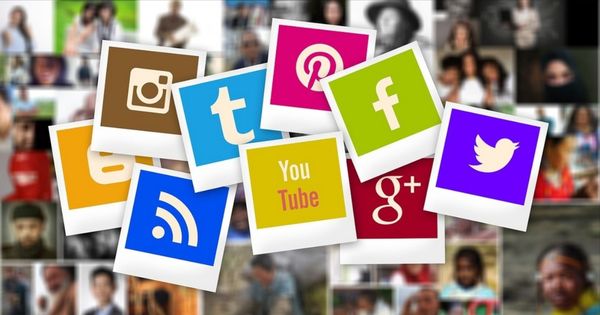
All of these platforms have meant that the experience is now happening off a website. What used to happen from two to four years ago was that you would build these incredibly intricate detailed experiences that would happen on your website.
So, you would have interactive lookbooks and hotspots, and these are very clever solutions. That is because we are using the website to drive conversion, intent and experience that has moved off-site.
The website itself has become much more transactional in nature. Now when someone sees your amazing snapchats and videos on Instagram and chooses to come to your website, they have already had that experience, and their intent level is higher.
What that means when you are building your user experience for your website is there has to be a much more linear path to purchase and a much deeper understanding of those unique conversion triggers.
Psychologically in the majority of cases that conversion happens at the point of where they double tap on that photo on Instagram. And then it is our job as marketeers to guide you through that process from inspiration to conversion.
Now that changes our role as marketeers. Historically it used to be our job as marketeers to grab these customers and drag them kicking and screaming through this website. We would hound you with remarketing.
If you looked at a pair of sneakers, we would show you the same plenty of pair of sneakers from ten to twenty times until you gave in. That is now changed, and we have to live in this environment of what I refer to as lighter touches and building more breadcrumbs.
With the democratisation of the Internet where any player can take on the big boys now we have to accept that the control has passed from the retailer into the consumer’s hand.
If the consumer has so many platforms to engage with, so many retailers throw them up similar products and similar options. Even if your Alibaba and your Amazon is trying to import parallel into the country and compete in direct, we have to pass the ownership over to the consumer.
And it is our job as retailers and marketeers to be there and do those light touches along the way and guide the path. It is more of a hand-holding exercise than pushing behind.
With that, you will notice the candor and style of marketing will start to change, and the spam just sprays it wide. It still works a little bit, but it is starting to die. Now we are getting more into this space where we need to tell programmatic stories.
Let’s look at an example. Historically we showed you five other similar pairs of sneakers twenty times on every platform and every banner. Now what we do if you have gone and looked at a pair of sneakers online is to use a process of what we refer to as shoe lacing.
It means that we are going to start telling you a story about that product and the features and benefits as opposed to just going to buy.
Let’s look at that pair of sneakers of Allbirds, for example. Instead of showing you that here is the sneakers, would you like 10% an off coupon? We are going to tell you an eco-story about that product.
We are going to start talking about design provenance, other consumers who have looked at that product and social proof. What we are not going to do is to go straight for the juggler and discount until your purchase.
So, that race to the bottom has happened. Now everyone has to come up a bit, and we have to start talking about the value add and the benefits and gains of that platform, not just driving a conversion.
I think the biggest change that I see is that marketeers have to think a lot more and their right to convert not just rely on programmatic tools where we force-feed consumers.
Those that will win are driving really high-quality content, having got a really smart understanding of consumer intent, understanding the difference between features and benefits of their product and genuinely are looking at everything from a consumer perspective.
There are heaps of other tools coming to market . Now the voice search is a thing you have got. I suppose in one month we will release our first client.

He is going to have an augmented reality website where you will be able to buy kitchen hardware, to see the tap on the desk literally and to turn it on, and water will come out.
Also, you can walk around that with your phone. You are going to see an image search. It is a real thing in fashion now to take a picture what you like in a shot, do image recognition and find out the websites that do that.
You can optimise your website to make sure that your images are searchable. That is going to be a real key benefit.
The core of commerce and marks has not changed in a good product. It has got to be well priced, a well market. Google in search will still be king, and you have to keep on pushing through those channels.
Max: Todd, you mentioned a lot of different tactics such as voice search and social media. I have met a lot of business owners who have got big, medium-sized and small-sized companies. Some of them even have not detached themselves from the idea of paper advertising.
How do you suggest those business owners work out when is the right time to do a different type of marketing because it will require a lot of expense?
Todd: I will give your audience some free consulting that we usually charge a lot of money for. Here is the trick. Facebook or Instagram are incredibly good at convincing me to advertise.
There is a whole raft of people out there on the market, snake oil salesmen that will tell you, run your Facebook ads and take 5% of your revenue. Let’s go back to that selling a pair of sneakers example.
When you decide that I want to run an advert campaign to people who like sports activewear, there is nobody that is going into Facebook and saying: “Please send me adverts about sports activewear”.
What has happened is that all of these social channels have used assimilation to assume that you will like that product. And then they match that with your other activities that have tracked online.
So, assimilation is that these people love sneakers. We might be selling a hiking sneaker or a high athletic sneaker. So that assimilated knowledge is never going to get particularly accurate.
The only place on the Internet where you can get accurate intent-based marketing is on search. When you are going to type into Google search that I want a pair of Nike AirMax size ten blue trainers, I know explicitly that you want that product.
We are not doing any assimilation; we are not guessing. You have shown consumer intent. So, in Overdose, the way that we run marketing tact campaigns is that we run them from both ends.
We run them at the one end where we are doing everything from a brand and consumer to reach prospective and at the other end we are running at them from consumer intent which is based on search.
In the middle, you arrive at the space which is social media, but you do not start there. So, we would be running SEO before we would be running marketing.
We would be optimising our site, understanding what the traffic we want is, what is this consumer that should be coming to our page. As they come to our website, then we collect and build audiences.
We might not know your email. But we can still get you into an audience, and we have got your pixel and can market to you. Then we slowly build up an audience of people who have visited the page about Nike sneakers that have come through search.
After that, we push that audience up into a social space and start marketing to those people. Next, we ask Google or Facebook to say: “Of this snapshot of two hundred people that we have laser-targeted, can you tell me other people in that look-alike audience?”.
Then they go and hit them and their influences. That process is how we get a crazy return on investment for our clients because we are not guessing. We are using intent to drive an audience. And then from the audience, we ask to get that little assimilation layer.

With the brand space, you have to write off those budgets in different ways. So, a key thing for any CMO there is they need to chop up their marketing budgets into marketing which is due to drive revenue and marketing and which is due to drive awareness.
What we see all the time is people. New sneaker brand runs these adverts on Facebook, and they get zero conversions. They may have actually acquired one thousand or two thousand fans, and a couple of people have been talking about that product.
But they look at that and say “That is a resolute failure”. It is actually not a failure but a misunderstanding of how marketing really works. The truth is current standards. We are looking at around between twelve to twenty touch points to generate the conversion.
You have to build value in different ways. You look at one budget and say: “This is money I am going to give to generate conversion”. So, that is working from the search intent upwards. “The other budget I am going to give you is to build brand awareness”.
That is going to go from a top of funnel downwards, and that is to drop more people in the head. And then the other processes should drip them down.
At a small business level, we took on a new client who sells speciality gin online. They have never done any digital marketing and been in the market for a year. They were doing around about five or seven hundred bucks a day in revenue.
We took this approach, and we ran a three thousand dollar marketing campaign across December. We grew them out in one month from a general fifteen thousand NZD 15, 000 a month revenue to around NZD 70, 000 – 90, 000 in revenue.
What I was doing was touching the right people at the right time. So, you do not need to spend huge money on this, but you need to spend smart money.
That comes back again in the last point this into how you use your digital agency to run your ads. Do not run ad campaigns where your agency is getting a commission on what they spend. This is the old way that agencies used to work.
It is the worst possible way you could do business because what you are saying to the agency is “To spend more money and I will give you more money”. It is you are guaranteed to lose there, and there is hardly any motivation to make these things work.
The second one and what can happen is the agency starts saying: “Instead of giving me a percentage of the spending give me a percentage of the revenue that we generate for you”.
That is dangerous and what you start doing is you start passing your whole marketing message on to this marketeer. When we are in this world of doing highly personalised adverts and gamification, you are motivating these people to create sales at any cost.
That is why do not do that. The way to use your marketing agency is to pay them a service fee for their hours and their time to run really good cost-effective campaigns and then give them a budget to work with.
A really smart agency will say: “You are going to give me five grand. It is going to cost you in resource two or four grand for me to run this”. But we want to hit this KPI and set those KPIs together, build campaigns and get involved with how those campaigns are being architected.
So that, in the future you can take those back and start running them internally. Any good agency that is worth its salt should be doing the heavy lifting for you. That is why we call ourselves consultants.
We should be there every day to run your business, educate and help you grow as an organisation and put some of that knowledge into your team.
So that whenever you come back to the consultant agency that is charging you from one hundred fifty to two hundred bucks an hour these people are adding value and not just rinsing and repeating.

Max: It is interesting that you mentioned about rewarding your service provider and as a business owner, I am interested in the return on investment.
I would like to know your opinion on a different way of working with a digital agency. For example, is it possible that it is happening on a different certain type of marketing campaigns where you can share the actual benefit that the client will receive?
Is it a commission, fifty-fifty split or a percentage? Because in this way, I can see the actual results. If I spent NZD 5 000 does it not mean that I will get NZD 10, 000 back?
Todd: We have three or four of those relationships. A couple of them we have even taken equity in our clients business. But there are other relationships where we make a percentage of the total revenue of the business.
I have no problem with you are building out a reward mechanism where your agency gets to clip the ticket. But that clipping of the ticket should be across the whole semantics of the business and not on one campaign.
So, if you are isolating yourself saying: “I will give you Facebook and any money you make on Facebook”, you can clip that ticket, you end up with someone who is overly motivated to do the wrong things in the wrong spaces.
What I rather see and how we architect it is that commission is much lower. But we are taking it across the whole broad of the picture.
That is because we have taken a true partnership approach and we are touching the search strategy, the platform strategy, the marketing strategy and how we are doing integrations.
We are taking a much broader perspective of the business and not just assuming that there is this magical silver bullet that someone can fire up some adverts and that fixes your business.
Any marketers who are worth their salt, will look at your website and say: “I am pushing you all this traffic, but I can see these bugs on your website. I do not like this user experience. I think your pricing is wrong and we should be bundling like this”.
So, if they are looking at it as I am going to throw traffic again, I am going to hope and pray it converts. And if it does not, I am going to try and find cheaper. That is just not good and smart business. There has to be a broader approach.
You should build those relationships in a deeper and more entwined space where those people genuinely understand your business. Where we are in relationships that get it going to a couple of years, we fully get it.
If you want to be smart, it takes time and energy in both directions. So, the retailer has to spend time with their agency to make sure that they understand as well. The agency has to be spending that time as well to get under the skin.
Therefore you need to be building out at minimum three to six months relationships to expect to see genuine results.
Anyone who tells you they are going to throw you results up overnight, it is possible, it can be done. But the longevity and sustainability come through the partnership.
Max: You spoke about sneakers and Allbirds brands who managed to find their own niche. I believe their unique selling point is that they source their materials in a sustainable way.
I remembered one of your recent articles on LinkedIn called “Different. Better than better?”. Could you briefly give examples of your clients may be that realised this idea? How do they find their unique selling point or this difference that gave them an advantage?
Todd: This is more of a principle that I apply to my own business and it echoes through other successful businesses when you are architecting your product, your strategy and your reason for existence.
If the only thing you have is that you are better than the competition, then I do not think you have got any chance of having sustainability or longevity in the market. There are some of our retailers who genuinely are different but are really better.
Let’s look at two examples: Rebel Sport and Briscoes. Rebel sport is hands down the best sportswear retailer in New Zealand. They understand pricing and the gamification of that. They have not created a unique product, but they do the right things incredibly well.
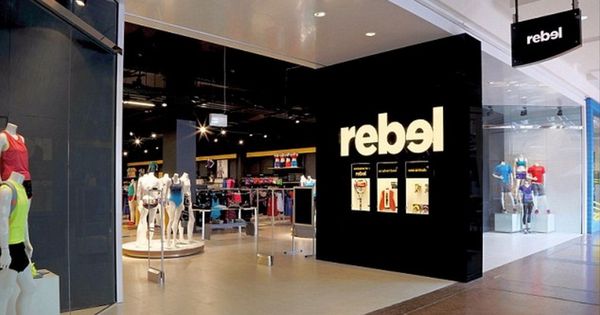
So, if you want to break into these spaces and you want to take on the industry giants, they have just got too much mass and volume around them. I look at businesses a little bit like the solar planets that have gravity towards them.
If we have got total sports, we are kind of gravitationally pulled towards Rebel. We need to have sports celebrities marketing these things. And what happens is that you start playing the same game as your competition.
If you cannot compete at that scale, you are going to lose. I applied that to Overdose. Being better is not an option. If you want to win you just got to be better. What is better than better is being better and different. So, two of these are great examples.
I think all those have done it saying: “We have got a better shoe. This shoe is more comfortable, sustainable and aesthetically pleasing”. But it is different. It connected with a different demographic and a set of values.
It was a digital-first product before they started going and driving physical stores. So, the beautiful components are when you are serving a similar need, but you are doing and ask where they are.
I think the best visualisation of this is if you have got kids soccer leagues. I see this all the time where someone kicks a ball, and you have nineteen of those twenty kids that all runs to get this ball.
Then there is one kid saying: “The goal is over here, and that ball is going to pop out at some point”. I am going to be the kid that picks it up and scores to go. So, nineteen kids have run towards the ball, and the only kid that wins is the biggest, strongest or the fastest kid.
That has got the most skills and pushes about the other side. But if you have not got all those skills, you have not got that weight, speed or opportunity.
You can build your own opportunity by being different and standing inside and saying: “I am going to wait for that opportunity to come over here, but I am going to be the one that scores the goal”.
Thus, when you are architecting a business and looking for how to compete with those around you, finding that true differentiation is critical. Even harder and more critical is communicating that differentiation.
If you looked at the Overdose model, the way that we communicated our differentiation was that we called ourselves an Anti-Agency, Agency. We literally went to market with this concept. By the way, that term was made up by one of our clients, not us.
We went to market saying: “We are an Anti-Agency, Agency”. And that one piece of content, the little video that we run on our homepage, probably gets us as many leads as everybody else.
If you go to every other agency website within Australia and New Zealand, these sell the same things as well. They will build you a website, show some ads though and do your research. The shape of their business is almost identical.
However, we went with a complete contrarian message which was that we do not have and do any of that. But we would love your opportunity to work with you, and we are pretty smart guys. And it works.
I do not think that there is any real mechanism of where you can falsely engineer that. When you reach a moment that you choose to start a business, you say: “This is my angle”.
Some businesses find this angle and this unique proposition which gets eroded slowly with time, because you get gravitationally drawn to your bigger competitors.
You start looking too much at your competitors, and comparing yourselves and then saying: “I cannot beat them because they have got that. So, I will create my version of that”. You are becoming a me-too brand.
What you have to do is to say: “I am going to find something unique and innovative”. So, I believe the trick to successful SMEs and startups is having a message which is communicable and understandable and people genuinely get it who you are.
Some companies are serving the same similar purpose, but they have just got those high notes sparks. From my personal experience, you should try to keep those sparks alive and stay committed to your sparks.
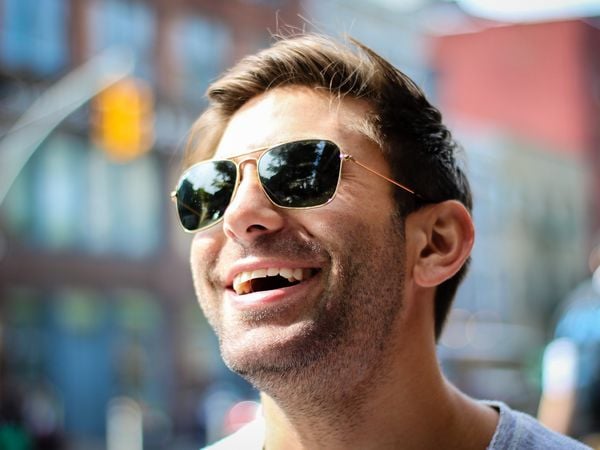
I think that is the hardest role of an entrepreneur is not to be sucked towards where the rest of the market lies, but to still believe in your vision and stay true to that.
It means you have to ignore some of your clients and staff, but stay true to what you believe is. The quickest way to not achieve that is to over analyse your competitors and to spend more time looking at their business than you do of your own.
I genuinely believe that if you spend more time on your own and self-belief and a bit of obstinance in there that you get to a better place in the long run. But it means that you are fighting that harder battle. And the harder battle, the bigger rewards are for the company.
Max: Todd, we can talk for hours, and I really appreciate your advice. Would you like to mention anything else or say how people can find you?
Todd: Sure, yes. My website is Overdose.Digital and you can find me on LinkedIn. We are active and present, across Australia, New Zealand and soon to be in London and New York. If people would like to speak to us, we would love to speak to you. That is kind of us.
Max: Thank you for your time, Todd, and I hope to talk and to read about your successful company sometime again in the future. Thank you.
Todd: Thanks so much, Maxim. All the best.
P.S. We’d love to answer any of your questions! Contact us now . Do you know of other people that will find this article useful? Please share it on social media. Thank you!
